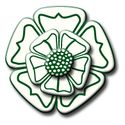Graeme Waterhouse Lithics Collection
Keith Boughey, 2020. https://doi.org/10.5284/1062880. How to cite using this DOI
Data copyright © Keith Boughey unless otherwise stated
This work is licensed under a Creative Commons Attribution 4.0 International License.
Primary contact
Keith
Boughey
Church Bank
Church Hill
Hall Cliffe
Baildon, W. Yorks
BD17 6NE
Resource identifiers
- ADS Collection: 3527
- DOI:https://doi.org/10.5284/1062880
- How to cite using this DOI
Overview

The collection consists of nearly 5000 individual Mesolithic, Late Neolithic and Early Bronze Age worked pieces, almost entirely of flint, with a few of local chert, taken chiefly off the stretches of moorland around his home town of Keighley, West Yorkshire, but also from similar moorland areas in the Peak District close to Sheffield and from upland limestone areas of the Yorkshire Dales, with a few from other scattered parts of the UK (probably collected when he was on holiday in the area).
The worked pieces include just about every type of tool from the period, including arrowheads (barbed-and-tanged, Conygar Hill, leaf-shaped, tranchet), awls/borers, blades, burins, cores, fabricators, hammerstones, microliths (both Broad and Narrow blade), plano-convex knives, points, scrapers (thumb, disc, end, horseshoe), utilised flakes and waste. It also includes a few oddments from later periods, such as claypipe bowl fragments, Medieval pottery sherds and a fragment of early undated textile.
The collection currently remains with Graeme Waterhouse, except for lithics collected off sites already explored, identified, recorded and published by John and Bob Richardson off Conistone, Kilnsey and Malham Moors, North Yorkshire, which were transferred to the Craven Museum, Skipton, North Yorkshire, to join the rest of the Richardson lithics collection already there.





